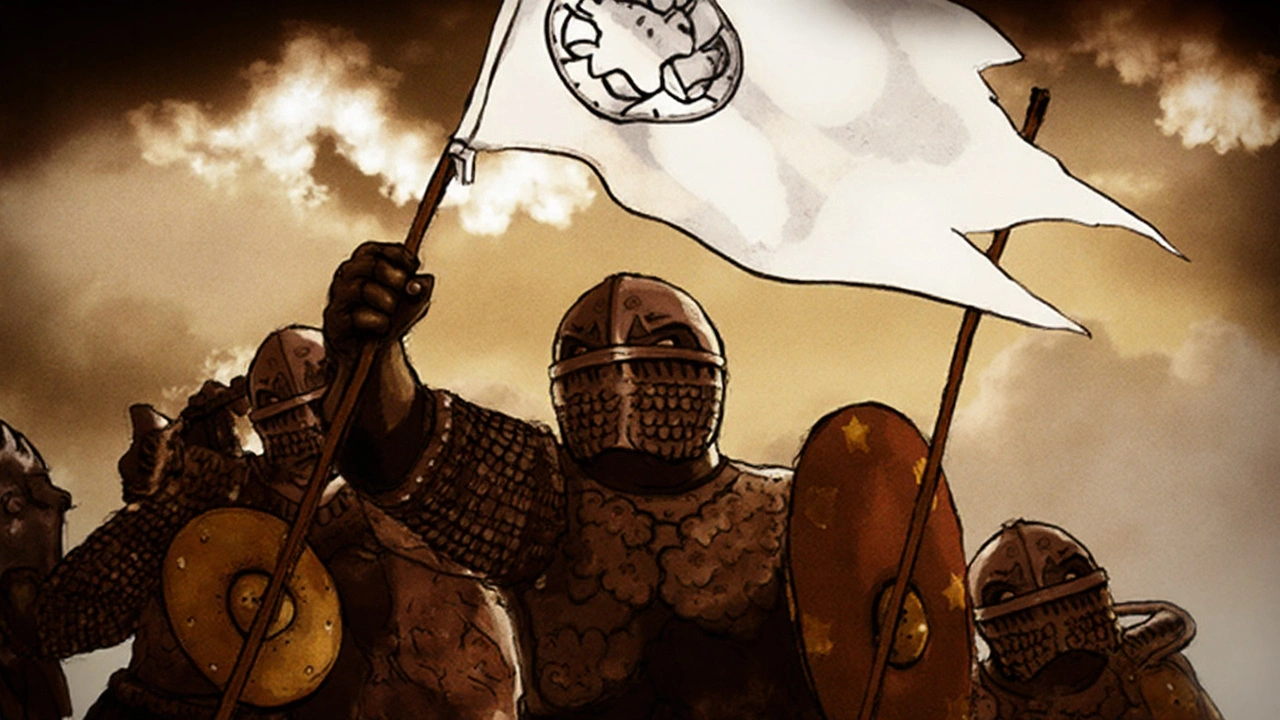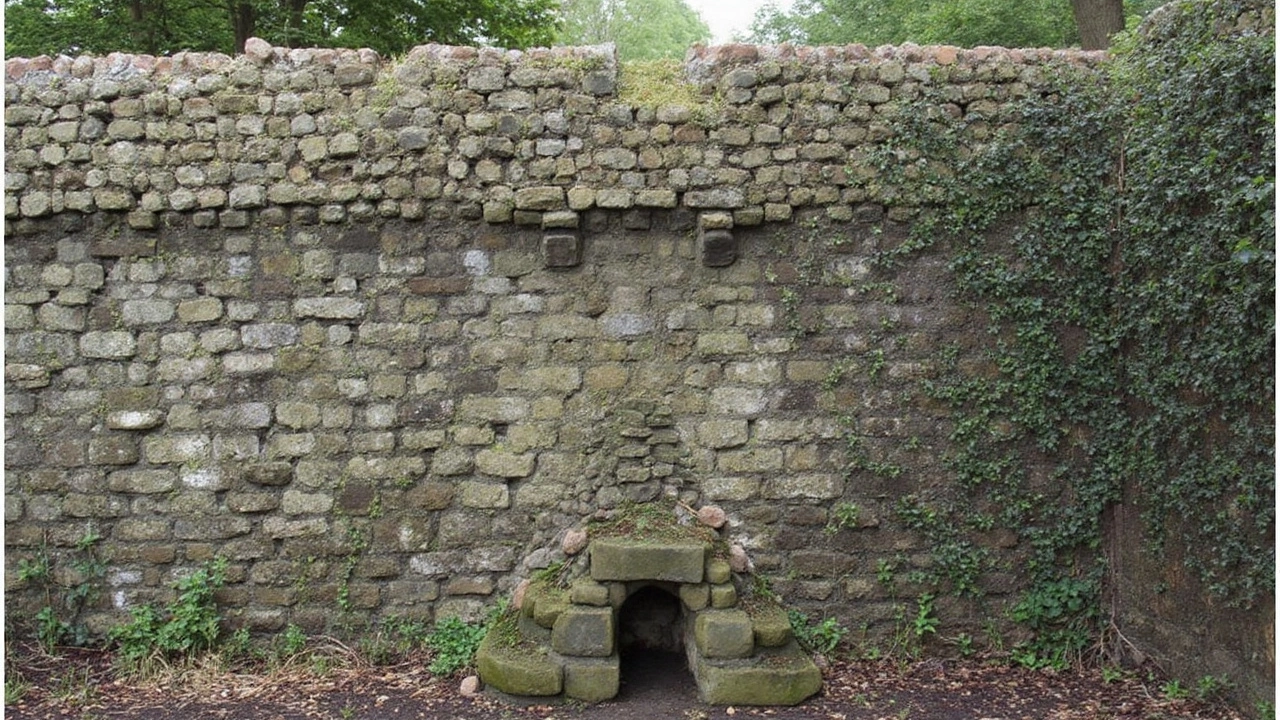
On a hot Monday in late September 1066, an English army smashed a Norwegian host beside the River Derwent near York. Nineteen days later those same men stood on a hill at Hastings and fell to the Normans. The hinge between those two moments is the Battle of Stamford Bridge—a fight that ended a centuries-long Viking threat and set up the Norman Conquest.
Why 1066 turned into a three-way fight for England
Edward the Confessor died in January 1066 without a clear heir. The Witan, England’s council of leading nobles and churchmen, chose Harold Godwinson, the powerful earl of Wessex. He was crowned fast, partly to keep the kingdom from tearing itself apart. Two rivals took that as a challenge: William, the duke of Normandy, and Harald Hardrada, the king of Norway. Harold’s estranged brother Tostig saw an opening too.
Hardrada’s claim reached back to an agreement between Norway’s Magnus the Good and Denmark’s Harthacnut. If one died without an heir, the other would inherit both kingdoms, and Hardrada argued that deal stretched to England. William’s case leaned on a promise he said he got from Edward and on an oath he said Harold made to him years before in Normandy. In short, three men thought they had a right to the English crown, and all were ready to fight for it.
Tostig was the wild card. Ousted as earl of Northumbria in 1065 after an uprising, he blamed Harold. He raided the English coast early in 1066, tested support in Scotland, and then struck a bargain with Hardrada. The Norwegian king sailed with about 300 ships packed with battle-hardened fighters—Norwegians, Danes, and allies from Orkney and elsewhere. Contemporary and later sources differ on headcounts, but a figure around 11,000 for Hardrada’s invasion force is widely used by historians.
On 20 September, Hardrada met England’s northern earls, Edwin and Morcar, at Fulford, just outside York. The Norwegians won. York prepared to submit and hand over hostages at a village east of the city called Stamford Bridge. Hardrada and Tostig moved there to collect their prize, leaving part of their army to guard the ships at Riccall on the River Ouse.
Then Harold sprung the shock. On hearing of Fulford, he force-marched his core army from London to Yorkshire—roughly 185 miles—in four days. That speed is remarkable by any medieval standard. It meant surprise. It also came at a price: fatigue and straggling. But on 25 September, surprise was everything.

Inside the battle and what came next
Accounts describe a warm day. Many of Hardrada’s men had set aside mail shirts, expecting talks, not a fight. Harold formed up fast west of the River Derwent. A narrow bridge across the river gave the village its name and shaped the first phase of the fight.
English sources and later Norse sagas tell the same dramatic scene in their own ways: a single giant of a warrior held the crossing for long minutes with a Dane axe, cutting down attacker after attacker until an Englishman got under the bridge and thrust a spear up through the planks. The lone defender fell, and the road opened.
Before the clash, Harold tried talking. He offered Tostig his earldom back if he switched sides and promised Hardrada only a grave in England—seven feet of soil, because he was taller than most men. Tostig refused. The lines closed.
Once over the bridge, the English housecarls—elite axemen—drove into the Norwegian shield wall. Hardrada fought under a lion banner called Landwaster. Early in the melee he took an arrow in the throat. Sources agree on the wound, even if they argue over the exact moment. With Hardrada down, Tostig took command and fell soon after. The Norwegian line bent and then broke.
The battle was not done. Reinforcements left behind to guard the ships ran toward the sound of fighting under Eystein Orri. Their late charge was remembered as Orri’s Storm: a fierce, desperate surge that briefly steadied the Norwegians before exhaustion and weight of numbers told. Many dropped from heat and the long run in armor. By afternoon, it was a rout.
Casualty numbers differ by source, but all agree both sides bled heavily. A working estimate puts English losses near 5,000 and Norse losses around 6,000. Out of roughly 300 ships that sailed from Norway, only about two dozen were needed to carry survivors home. Hardrada’s son, Olaf, was allowed to leave with those men after swearing not to attack England again.
Why does this fight loom so large? First, it ended royal-backed Viking invasion of England. Raids and small expeditions did not vanish overnight, but the era of Scandinavian kings bringing great war fleets to England stopped here. Second, this victory drained Harold’s strength. Within days, word reached him that William had landed on the south coast—his fleet put in at Pevensey on 28 September. Harold turned his army around.
Think through the logistics. The men who just fought at Stamford Bridge had already marched from London to York in four days, fought a full-scale battle, and then had to march back south. Harold reached London around 6 October, picked up fresh levies, and pushed on to confront the Normans. On 14 October, his line held the ridge at Hastings for most of the day before breaking under Norman archers, infantry, and cavalry. Would a rested northern army have made a difference? We cannot prove it. But the timeline is brutal, and exhaustion is part of the story.
The sources matter here. The Anglo-Saxon Chronicle gives a terse, grounded English view of the campaign. Later Norse sagas, like Heimskringla, add color, dialogue, and heroic set pieces. Those later texts were written long after 1066, so historians treat the vivid details—like the bridge champion and Orri’s Storm—with care. Yet the broad picture matches: a surprise, a frantic crossing, the fall of Hardrada, the death of Tostig, and a shattered Norwegian army.
Tactics also tell us why Harold won. He struck when the enemy was split between Stamford Bridge and the ships at Riccall. He crossed fast at a choke point once the bridge defender was down. His housecarls were experienced in close combat and could batter a shield wall. And he had morale on his side: this was a home field fight for survival, not a raid.
Geography played its part. The River Derwent hemmed in movement, the narrow bridge forced the early shape of the fight, and the ground east of the river gave the English room to pressure the Norwegians once they were across. Heat added strain. Heavy mail shirts were lifesavers against axes but punishing on a warm day—even more so if you sprinted in them.
Politics sits in the background of every stroke of a sword here. Tostig’s feud with Harold fractured English unity in the north. Hardrada’s bid revived old Scandinavian claims to the English crown. And William waited for the moment when England would be stretched. He got it.
What happened to the key players next is telling. Olaf returned to Norway and later ruled as Olaf III, known for peace and rebuilding, not conquest. Norway turned inward after the shock of 1066. In England, Harold’s death at Hastings ended the Godwinson dynasty and opened the door to Norman rule. Castles rose across the landscape. Land changed hands on a massive scale. The language and law of the realm shifted over decades. A fight by a Yorkshire bridge is one of the reasons why.
Archaeology has struggled to pin down the exact footprint of the battlefield; the village has grown, and finds are scarce. The broad setting is clear, though: the river crossing, the slopes beyond, the road from York, and the route back to Riccall. Local memory has kept the story alive, and the 950th anniversary in 2016 drew crowds to reenactments and talks. For a quiet place, it carries a noisy history.
There is also the simple human piece. Harold tried to save his brother. Tostig would not take the offer. Hardrada, a veteran of wars from the Mediterranean to the North Sea, met his end far from home. English peasants, minor thegns, and housecarls who had never seen Norway or Normandy carried the weight of two invasions in three weeks. The records name a handful of leaders and banners. Most of the men who fought here are faces without names.
If you are mapping the year, a quick timeline helps.
- January: Edward the Confessor dies; Harold Godwinson is crowned king.
- 20 September: Earls Edwin and Morcar are beaten by Hardrada at Fulford.
- 25 September: Harold defeats Hardrada and Tostig at Stamford Bridge.
- 28 September: William of Normandy lands on England’s south coast.
- 14 October: Harold’s army fights and loses at Hastings; William’s path to the crown opens.
Stamford Bridge is often called the end of the Viking Age in England. That line is a bit neat. Trade and travel carried on; Norse culture did not vanish. But as a description of power politics, it works. After 25 September 1066, no Scandinavian king came with a great fleet to claim the English throne. That door closed. Another opened at Hastings.
In classrooms, the story can feel like two separate scenes: one by a river in Yorkshire, the other on a ridge in Sussex. They are really one chain. The forced march, the broken shield wall, the heavy losses, the sprint back south—those moments shape the next ones. When you trace England’s turn from Anglo-Saxon rule to Norman rule, start here, where a bridge, a hot day, and a surprise attack decided more than who walked away.




